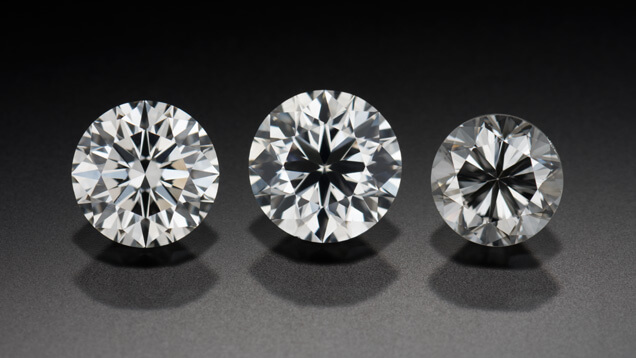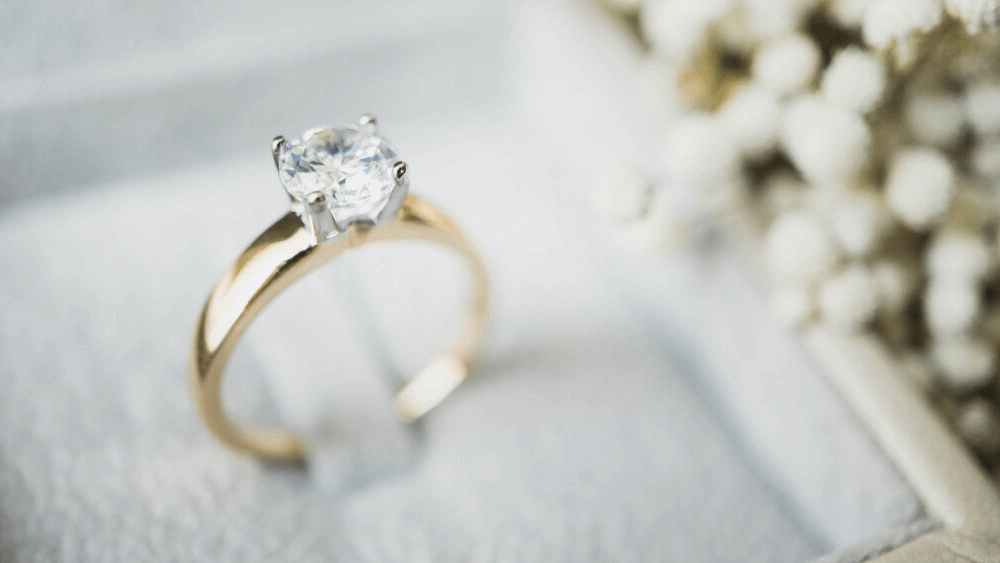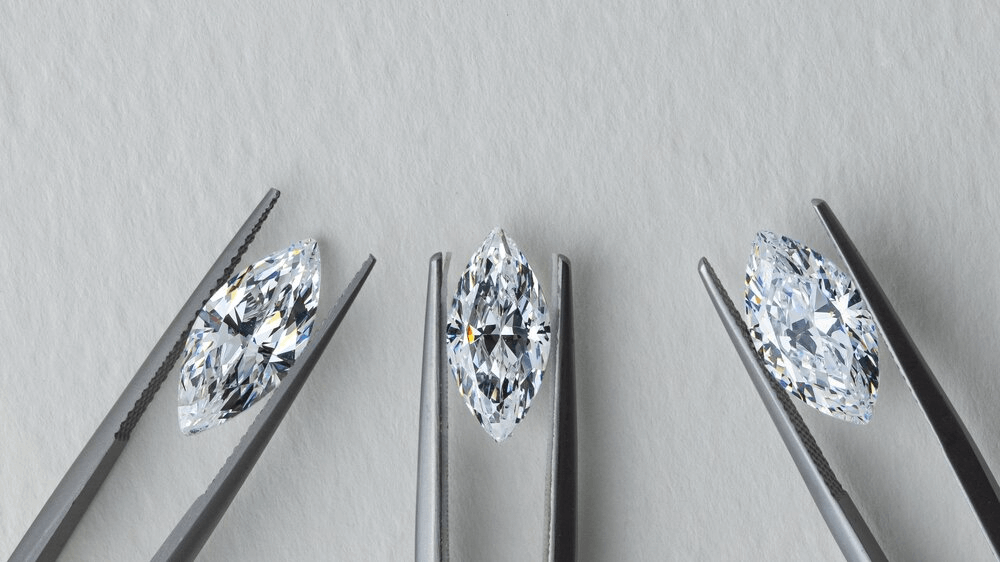Is Your Diamond Triple Excellent? Find Out Now!

By Gary A.

Edited by Olivia H.
Published Oct 16, 2021
Edited on Mar 31, 2025
A diamond with a Triple Excellent rating strikes the perfect balance of cut, symmetry, and polish, delivering a brilliance that stands out in any setting.

- 7 Quick Tips for Buying a Diamond Engagement Ring with a GIA Triple-Excellent Diamond Certification
- Introduction to the Triple Excellent Diamond
- Decoding the Grades: Cut, Symmetry, and Polish
- The Importance of GIA Certification
- Visual Impact: Beyond the Grades
- Triple Excellent Diamond Price: Is It Worth It?
- Our Expert Take
- 9 FAQs
Before we dive deeper into the specifics, here are some practical tips to help guide your decision-making process:
7 Quick Tips for Buying a Diamond Engagement Ring with a GIA Triple-Excellent Diamond Certification
- Tip 1. Understand the Implications of the Triple-Excellent Rating: Recognizes diamonds with the highest ratings in cut, symmetry, and polish from the GIA. Key Focus: While impressive, this rating alone doesn’t guarantee the best visual appearance. Consider how these factors influence overall brilliance and fire.
- Tip 2. Analyze the Cut for Maximum Brilliance: The cut impacts a diamond’s ability to reflect light, crucial for that sought-after sparkle. Proportions Matter: Ensure the diamond’s proportions fall within ideal ranges for brilliance and fire. Avoid overly deep or shallow cuts.
- Tip 3. Inspect the Symmetry Beyond Surface Level: It’s not just about alignment but also about the diamond’s light performance. Facet Alignment: Check if the diamond’s facets align correctly, as misalignment can affect light reflection and overall brilliance.
- Tip 4. Evaluate the Polish with a Critical Eye: Can influence the smoothness and shine of the diamond’s facets. Surface Inspection: Look for any polish lines or defects that might impact the diamond’s luster.
- Tip 5. Be Cautious of Overpaying for the Triple-Excellent Label: Triple-Excellent diamonds often command a premium, but ensure the price aligns with the overall quality. Balanced Spending: Avoid overspending on the triple-excellent aspect at the expense of other important features like color and clarity.
- Tip 6. Consider the Diamond’s Visual Appeal in Various Lighting:Observe the diamond under different light sources to assess its true sparkle and color. Real-World Appearance: How the diamond looks in everyday settings can be more telling than under jewelry store lights.
- Tip 7. Do Not Neglect Color and Clarity: Even a triple-excellent diamond can have noticeable color or inclusions. Holistic View: Balance the triple-excellent rating with favorable color and clarity grades for an aesthetically pleasing diamond. Conclusion When selecting a diamond engagement ring, especially one with a GIA triple-excellent diamond, it’s crucial to look beyond the certification.
Understanding the nuances of cut, symmetry, and polish, and balancing these aspects with color, clarity, and overall visual appeal, will lead to a more informed and satisfying purchase. Remember, a diamond’s beauty is not just in its rating but in how it meets your personal preferences and shines in everyday life.
Now that you’ve got these practical tips, use Jeweler AI below to find the perfect engagement ring that suits your style and budget:
Introduction to the Triple Excellent Diamond
It’s no secret that a diamond’s cut is the key to its sparkle. Any prospective buyer will, for that reason alone, do well to limit their search to include only those diamonds that have been graded high in this category according to the GIA’s incredibly high standards.
As a result, you’ve probably already familiarised yourself with the GIA’s cut grades – and, hopefully, committed yourself to the Excellent and Very Good categories in order to guarantee high levels of brilliance, fire and scintillation. Doing so makes the process of finding a worthwhile diamond much easier.
Still, the world of well-cut diamonds is not quite as simple as that. There is another term that you will likely see attached to certain diamonds on the market, expressed either as ‘triple excellent’, ‘triple x’ or ‘GIA 3X diamonds’. While not an official grade on the GIA’s scale, it refers to the very best diamonds that pass through the GIA’s labs – although they may not represent the very best diamonds for you.
Defining Triple Excellent Cut Diamonds
So, what does a triple excellent diamond mean? Put simply, 3X (or triple excellent) refers to Round diamonds that have been graded Excellent for cut, symmetry and polish. It is a term used by jewelers, not the GIA themselves.
In any GIA report, one of the first things that you will notice is the subcategories listed for these three features. Each one is, of course, graded in the exact same way that the overall Cut category is: from Excellent and Very Good (the only two grades we would recommend) through Good, Fair, and Poor.
When a Round diamond scores the top grade in every subcategory, it is referred to colloquially as triple excellent – or 3X – and, understandably, considered to represent a very high-quality diamond.
Remember, however, that as the GIA does not officially recognize this label, it is not something that you will see printed in your diamond’s GIA report. As a term, it’s far more likely to crop up in promotional materials for certain vendors and jewelry stores.
The Round Brilliance Factor
Triple excellent diamonds can only ever be Round cut because only the Round cut is graded on Cut quality. Other shapes are graded for polish and symmetry, but the ROund Brilliant receives an additional grade that is essential for determining triple x diamonds.
Decoding the Grades: Cut, Symmetry, and Polish
Three factors – all equally important for a diamond to be Triple Excellent. Here’s what you need to know.
The Importance of Cut for a Triple Ex Diamond
Perhaps the most important thing to note about the GIA’s approach to cut quality is the fact that they only provide an overall ‘Cut’ grade for Round diamonds. This is why you will only ever find Triple Excellent Round cut diamonds – rather than Pear, Oval or any other shape. For it to be triple Excellent, it has to be given an Excellent cut grade.
According to the GIA, a diamond given an Excellent cut grade is very bright, and features a strong balance between light and dark areas within the stone. The facets are even and the reflections sharp.
While the finer points that mark the difference between an Excellent cut and a Very Good or Good cut are only going to be noticed by an experienced diamond grader or jeweler, you will find that plenty of differences stand out to you, even at the very start of your diamond-buying journey.
Symmetry’s Role in Brilliance
A diamond with Excellent symmetry will feature facets that align perfectly at the girdle – for instance, the points of the pyramids on the crown will align with the points of the pyramids on the pavilion – a well-centred table, even shape and no additional facets.
Asymmetries can be glaringly obvious, or they can be just subtle enough that you may not notice them at first and second glance. Some asymmetries can be more obvious once the diamond is placed within its setting – and, even if you’re never able to detect them yourself, they can still alter the brilliance of the diamond and prevent it from sparkling as it otherwise should.
Symmetry is central to the diamond’s brilliance, and only Excellent or Very Good grades should be considered. A lack of symmetry can impair a diamond’s ability to produce as much brilliance as you’d want it to.
If you’ve ever seen a rough (uncut) diamond, you’ll know that a diamond’s facets are the reason it sparkles the way it does. Without them – and, of course, without a high-quality polish – diamond appears pretty dull and unassuming, particularly to those who have only ever encountered diamonds after they have been cut, polished and set within a beautiful ring.
These facets can’t just be placed wherever the cutter sees fit, however. Taking the time to figure out how to get the most symmetry out of a diamond is an essential step in diamond cutting and, for a buyer, checking for a high symmetry grade is an essential step in making a good investment.
Polish: The Finishing Touch
After the cuts have been made, and the final shape of the diamond has been realised, the finishing step is to polish each of those facets and to ensure the smoothest, glossiest surfaces possible for reflecting light. GIA graders look for any slight flaws that may have been caused by this process.
While polishing will rarely cause any significant issues for a diamond, polishing can easily cause abrasions, scruff marks and burns – among other things – that impact the appearance and sparkle of a diamond.
Still, as we mentioned, these surface defects typically remain relatively minor – and will look far worse in magnified images of the diamond than they do when you are looking at the stone in person, without magnification.
Symmetry is typically considered to be marginally more important to the diamond’s brilliance than polish, but it is important that you do not overlook the significance of a strong grade in this area, either.
The Importance of GIA Certification
The GIA is the only lab we trust to grade the diamonds we sell to our customers. They’re leaders of the pack in terms of consistency and standards which means that, if a diamond is graded Triple Excellent, you can trust that it truly lives up to its grading report.
You can read more about the GIA here.
Visual Impact: Beyond the Grades
Triple Excellent diamonds will naturally present themselves as very brilliant, fiery, high-quality cuts. Keep in mind, however, that Cut is not everything. It’s very important, but it’s not capable of making a yellow or severely injured diamond look perfect.

Triple Excellent Diamond Price: Is It Worth It?
Also remember that, in order to be given an Excellent cut grade, a diamond does not need to be triple excellent. The GIA will still award Excellent cut grades to diamonds featuring ‘Very Good’ symmetry or polish, because of the fact that the differences between those top two grades are microscopic and nowhere near significant enough to bring down the diamond’s overall appearance.
Buyers with a limited understanding of the importance of each grade and feature will be reassured by the fact that these diamonds have been given ‘top grades’ across each category.
And, obviously, there is some merit to that. There’s nothing wrong with triple excellent diamonds, and they do guarantee a high level of quality in the most important of the Four Cs, but they are also given a much higher price because of that – a price that doesn’t necessarily need to be paid by anyone looking to purchase a beautiful and sparkly diamond.
Our Expert Take
Beautifully cut diamonds are more than worth the higher investment they require, but they don’t have to be triple excellent to tick all the boxes required to make a knock-out engagement ring.
Even triple excellent diamonds can be afflicted by strong fluorescence, visible inclusions, or a tangible yellow color – and, if they are, Excellent grades across symmetry and polish won’t be enough to compensate for its flaws.
9 FAQs
- Q: What Does a Triple-Excellent Diamond Rating Mean?
- A: A triple-excellent diamond rating by the Gemological Institute of America (GIA) indicates that the diamond has achieved the highest possible grades in cut, symmetry, and polish. This is a measure of the diamond’s craftsmanship and precision in cutting.
- Q: Are Triple-Excellent Diamonds the Best for Sparkle?
- A: While triple-excellent diamonds are expertly crafted for optimal light performance, sparkle also depends on other factors like color, clarity, and individual taste. It’s essential to view the diamond in person to judge its true sparkle.
- Q: Is a Triple-Excellent Rating Necessary for a Quality Diamond?
- A: No, a triple-excellent rating isn’t the only indicator of a quality diamond. Diamonds with slightly lower ratings in polish or symmetry can still be beautiful and brilliant, often at a better value.
- Q: Does a Triple-Excellent Diamond Guarantee Flawlessness?
- A: No, the triple-excellent rating pertains to cut, symmetry, and polish, not to the diamond’s clarity or color. Flawlessness in diamonds is determined by clarity grades, and triple-excellent diamonds can still have visible inclusions or color.
- Q: How Does a Triple-Excellent Rating Affect a Diamond’s Price?
- A: Diamonds with a triple-excellent rating generally command a higher price due to their superior cut quality. However, it’s important to consider whether the premium price aligns with the diamond’s overall beauty and your budget.
- Q: Can I Find Triple-Excellent Diamonds in All Shapes?
- A: The triple-excellent rating is specific to round brilliant diamonds, as the GIA only provides cut grades for this shape. Other shapes are graded for polish and symmetry but don’t receive an overall cut grade.
- Q: Should I Choose a Triple-Excellent Diamond Over Other High-Quality Diamonds?
- A: The choice depends on your preferences and budget. While triple-excellent diamonds represent high craftsmanship, other high-quality diamonds with slightly lower grades can also be stunning and may offer better value.
- Q: Is the Triple-Excellent Rating the Same Across All Labs?
- A: Different grading labs may have varying standards for awarding the highest grades in cut, symmetry, and polish. It’s important to consider the reputation and consistency of the grading lab when evaluating a diamond’s rating.
- Q: Will a Triple-Excellent Diamond Always Look the Same in Different Lighting?
- A: No, the appearance of a triple-excellent diamond can vary under different lighting conditions. It’s recommended to view the diamond in a range of lighting environments to understand its true character and brilliance.
Discover your perfect sparkle with Jeweler AI – delve into the world of Triple Excellent Diamonds and find your dream engagement ring with ease.
FOLLOW-UP GUIDE SERIES












